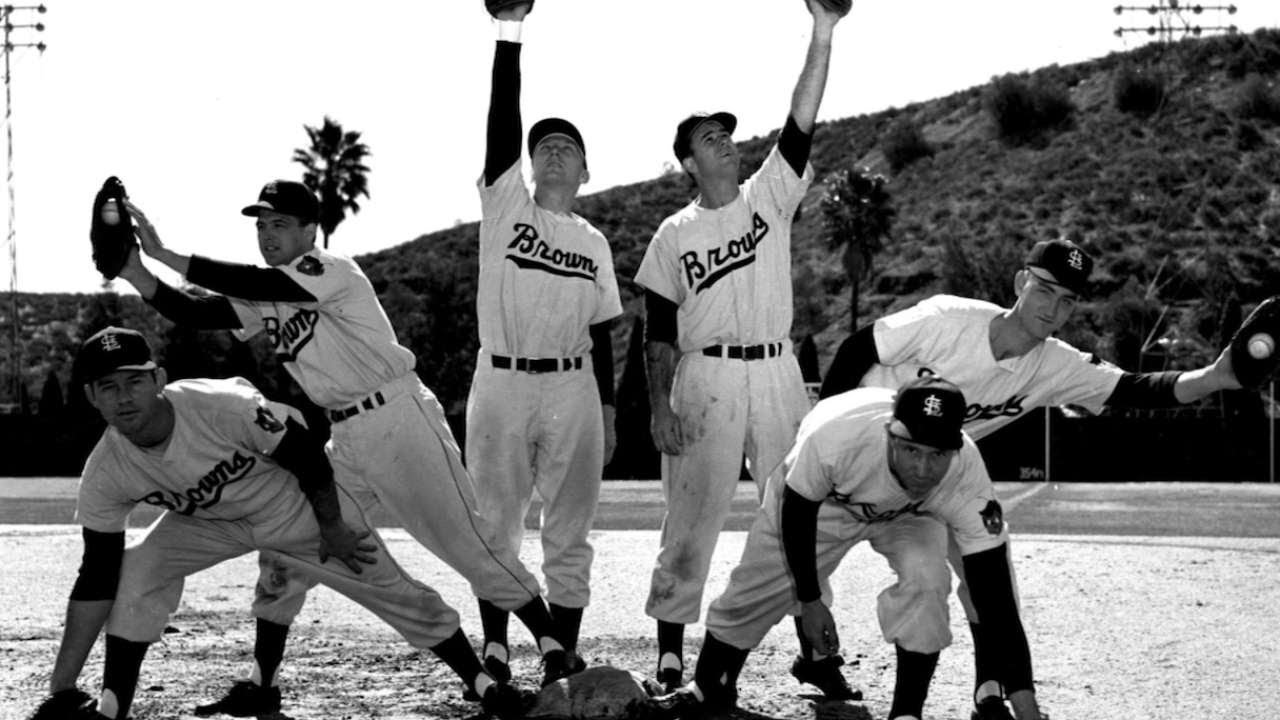Baseball History Comes Alive Now Ranked #2 by Feedspot Among All Internet Baseball History Websites and Blogs!
Guest Submissions from Our Readers Always Welcome!
Scroll Down to Read Today’s Essay
Subscribe to Baseball History Comes Alive for automatic updates.
Today we welcome back Matt Kastel with the first of a three-part series on the not-so-successful history of the St. Louis Browns, certainly the most overlooked franchises in baseball history. Today, in Part One, Matt gives us a broad look at the early years That will be followed next week with Part Two, the colorful Veeck Years. And then in Part Three, Matt will take a look at the Browns’ incredible last game in which they actually ran out of baseballs!
The St. Louis Browns’ Last Game
Part One: The Early Years
The Browns were perennial losers. Even the color they picked for their moniker was drab and dreary, setting a tone of futility. After a 52-year run in St. Louis, it came as little surprise when the Browns could no longer sustain themselves as a financially viable organization.
In typical Browns fashion, they went out with a loss and nearly didn’t finish the game as they ran out of baseballs.
What led the Browns to the brink of collapse on September 27, 1953? A short history of the team is telling. The franchise boasted a rather colorful and unconventional history, this included a World Series appearance, a one-armed outfielder, a midget (the term used then), a flamboyant and larger-than-life owner, and the legendary Satchel Paige.
The Browns were the first-ever Milwaukee Brewers and, keeping with their later performance as the Browns, had a reputation for fielding a poor team, going 48-89 in 1901. A bad team in a small market equals poor attendance, and soon the team moved to St. Louis, then the fourth largest city in the country. Showing no originality, they called themselves the Browns as the other baseball team in town, the St. Louis Cardinals, formerly went by the name Brown Stockings until 1900.
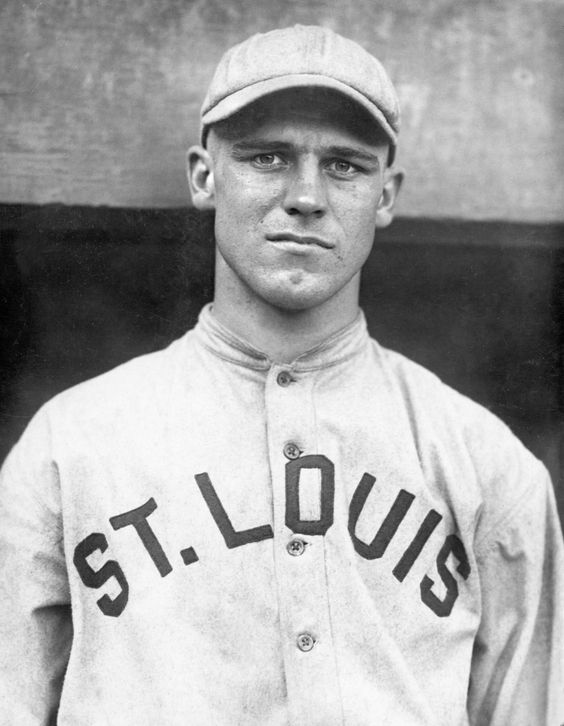
In the early ’20s the Browns showed signs of life with some good teams, led by Hall of Famer George Sisler who twice hit over .400, and St. Louis was even considered a “Browns town” until the Cardinals beat the Yankees in seven games in the 1926 World Series.
From then till the end, the Browns were the red-headed (or should I say brown-headed) stepchild in St. Louis, and things only got worse. From 1927 to 1943, they only had two winning seasons and bottomed out in 1939 with a 43-111 record.
During the War years when Major League Baseball was hamstrung by players fulfilling military commitments, the Browns managed to make it to the World Series in 1944. But the Browns being the Browns, even this success didn’t buy them any love in St. Louis as they lost to their crosstown rivals, the Cardinals, four games to two.
With able-bodied men in short supply during the War, finding players could be a challenge. Some teams stocked their roster with older players, while others, like the Cincinnati Reds, turned to youngsters like Joe Nuxell who was only 15 when he made his Major League debut.
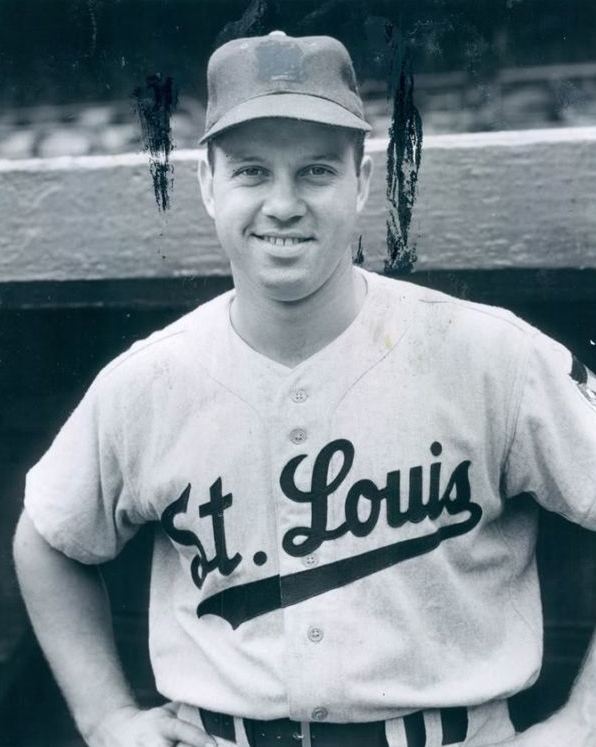
Desperate times beget desperate measures, and this led to one of the most remarkable physical feats in all of Major League Baseball history, when in 1945 the Browns had a one-armed outfielder named Pete Gray who played in 77 games and collected 51 hits.
When Gray was six years old he was riding on a truck’s running board when it hit a telephone pole. In the accident, Gray’s right arm was trapped in the spokes of the truck’s wheel. As a result of the accident, his right arm was amputated below the elbow.
Gray, who tried to enlist after Pearl Harbor and was turned down, began his minor league career in 1942. In 1944, the year before he was called up to the majors, he hit a robust .333 for the Memphis Chickasaws, leading the team in runs and hits and somehow, even with only one arm, clubbed five home runs.
Gray did weight training to strengthen his left arm and swung a 38-ounce bat. When Gray caught a ball in the outfield, he would quickly transfer his glove to under his right stump and throw the ball back in with his left arm.
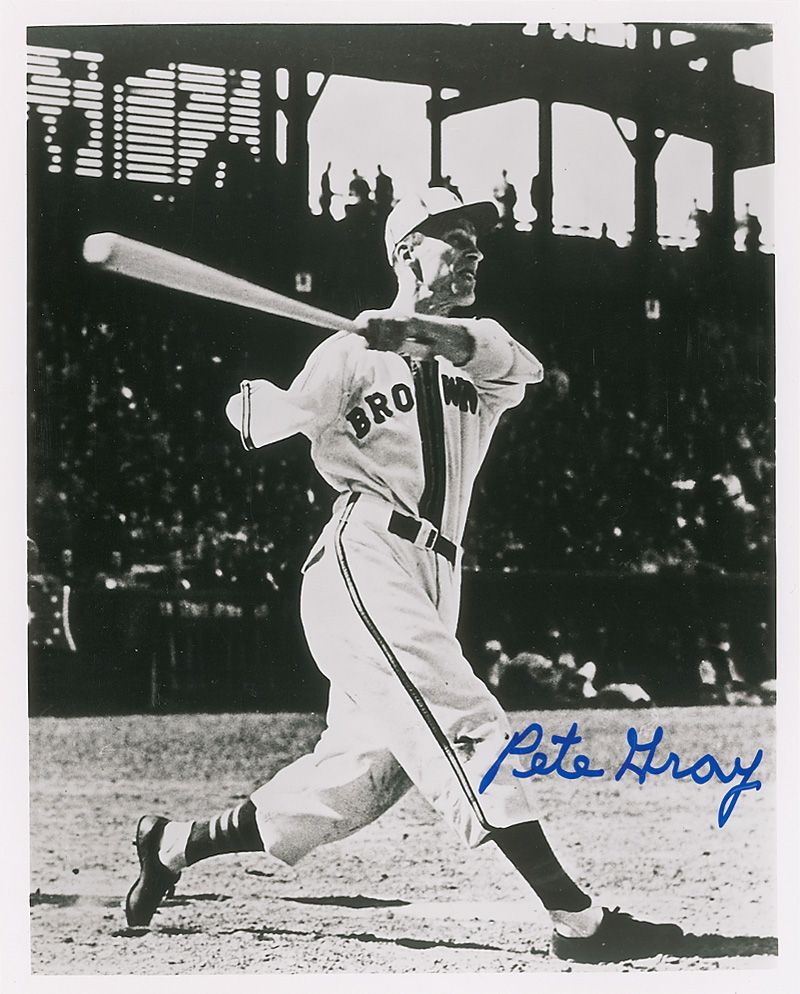
His determination is inspirational even 80 years later, and although Gray’s quotes about his playing days are few and far between, they speak of his character. When he won a Courageous Athlete Award he said, “Boys, I can’t fight. And so there is no courage about me. Courage belongs on the battlefield not on the baseball diamond. But if I could prove to any boy who has been physically handicapped that he, too, can compete with the best—well then, I’ve done my little bit.”
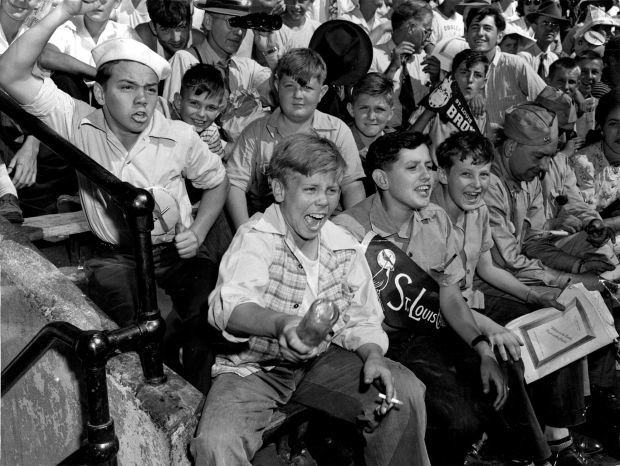
After the team’s World Series appearance in 1944, it all went bad for the Browns. They finished last in attendance every year after 1946, and the play on the field was just as lousy. The owners of the team, Charles and William DeWitt, put the team up for sale in 1951, and Bill Veeck jumped at the chance to buy the Browns.
Veeck had previously owned the Cleveland Indians but had to sell the team as part of his divorce settlement. For the Browns, the Veeck years would turn out to be tumultuous and short-lived but far from boring, and led to some of the most talked about moments in the history of baseball.
Matt Kastel
Subscribe to our website, Baseball History Comes Alive with over 1500 fully categorized baseball essays and photo galleries, now surpassing the one million hits mark with over 1,204,000 hits and over 950 subscribers: https://wp.me/P7a04E-2he

